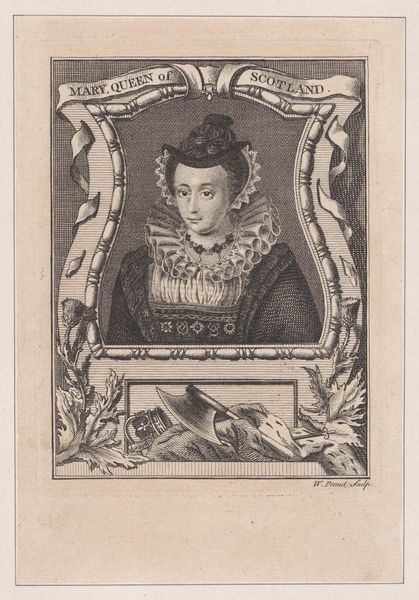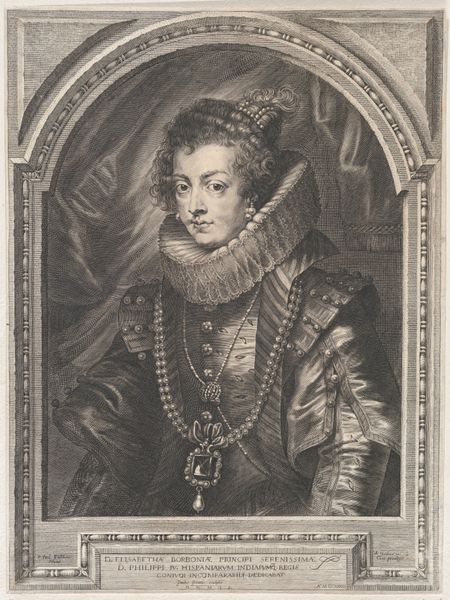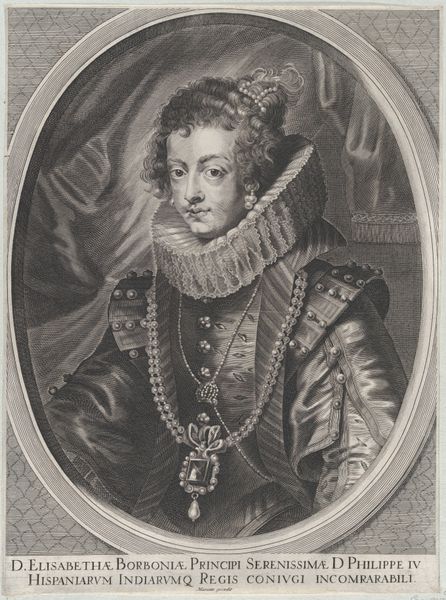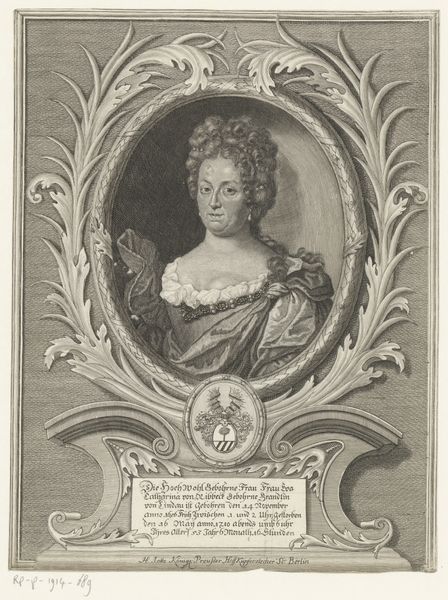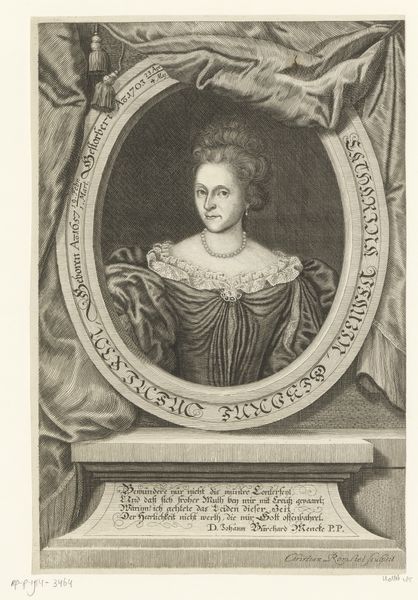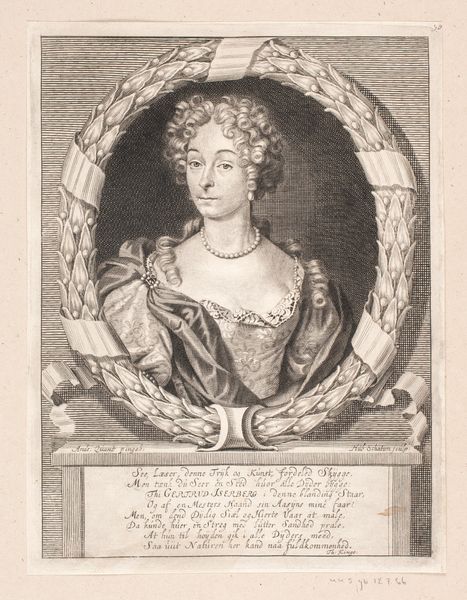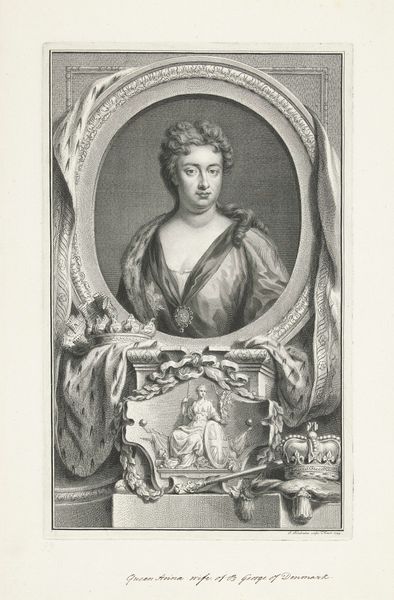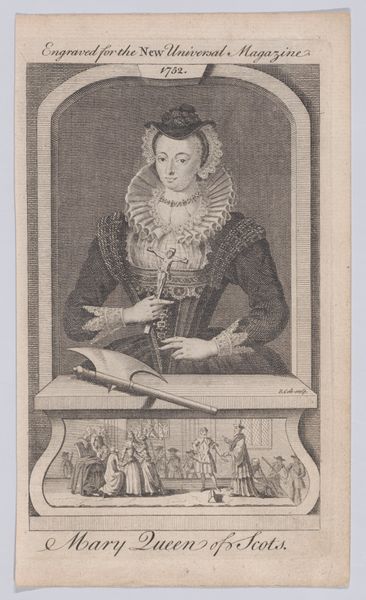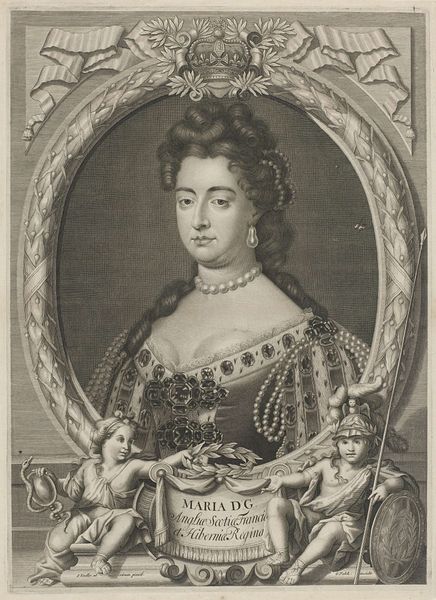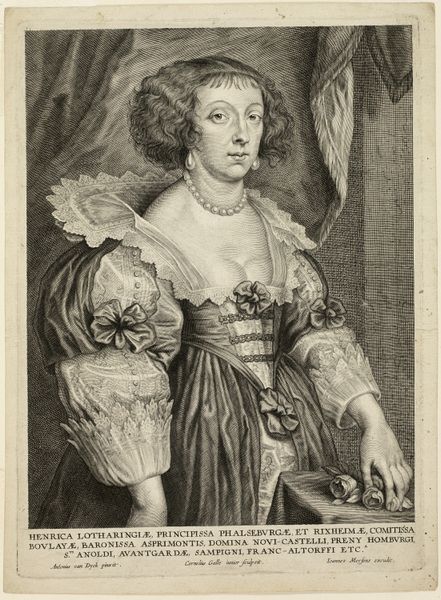
drawing, print, engraving
#
portrait
#
drawing
#
baroque
# print
#
old engraving style
#
england
#
engraving
Dimensions: Plate: 14 11/16 × 9 3/16 in. (37.3 × 23.3 cm) Sheet: 16 13/16 × 12 3/16 in. (42.7 × 30.9 cm)
Copyright: Public Domain
Curator: The delicate rendering of "Mary, Queen of Scots", an engraving executed by Jacob Houbraken in 1738, presents a compelling image. What's your first take? Editor: Austere and melancholic, I think. Despite the baroque flourishes of the frame, her expression carries a weight of resignation, almost preemptively defeated. Curator: That feeling, I believe, stems from Mary's turbulent life, steeped in political intrigue and ultimately, tragedy. Houbraken likely drew from earlier portraits, inheriting a visual language that encoded her plight as a female monarch in a patriarchal society. Her execution serves as an object lesson against challenges to the prevailing gender order. Editor: Absolutely, and these symbolic cues become evident throughout the engraving. Note how the ornamental cartouche below displays what looks like her abdication or some scene of royal humiliation; it's framed with scenes reminiscent of classical drama. Curator: Indeed, visual devices build meaning over time and space. Take for instance her elaborate ruff and jewelry—signifiers of royalty, wealth, and power—they serve as visible claims to authority despite her being held in prolonged captivity and labeled a traitor by Queen Elizabeth. What could be construed as displays of grandeur are, perhaps, signs of resistance? Editor: It certainly casts the figure of Mary in a new light when viewed alongside England’s socio-political and religious climate, offering a narrative far more complex than one realizes at first glance. There is the question of feminine authority against institutional authority. Curator: I think what holds our attention here, across the years, is not merely her beauty or rank, but the enduring power of a portrait to ignite debate about monarchy, faith, gender and, ultimately, justice. Editor: Indeed, the symbols linger long after the historical circumstances fade, constantly presenting avenues for renewed interpretation. Curator: Let us move on to examine how another, contemporary artist, employed symbolism...
Comments
No comments
Be the first to comment and join the conversation on the ultimate creative platform.


